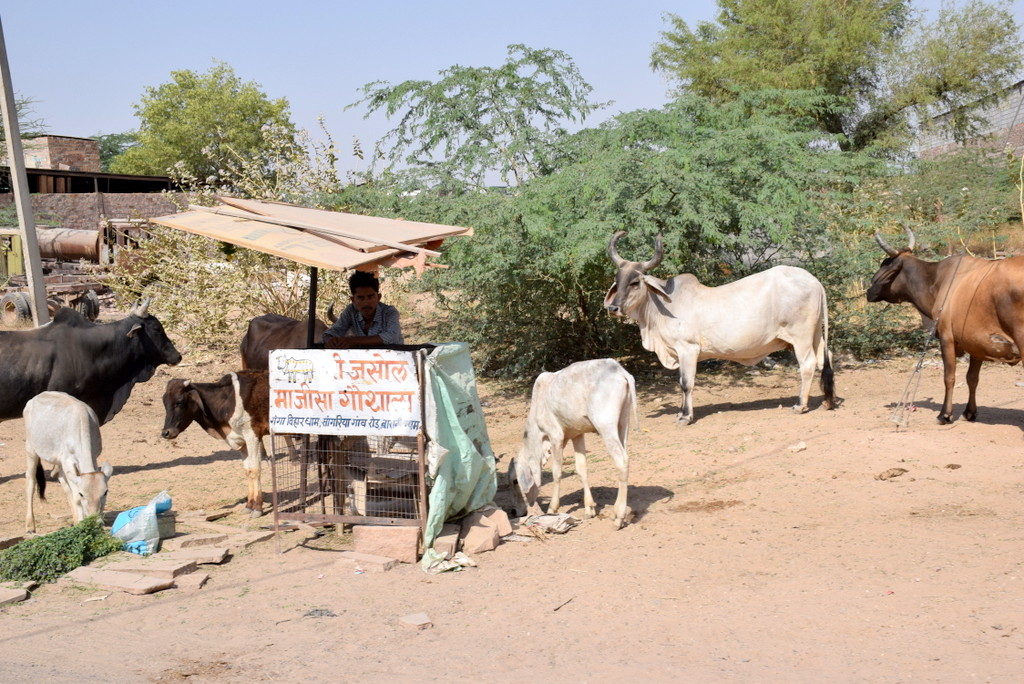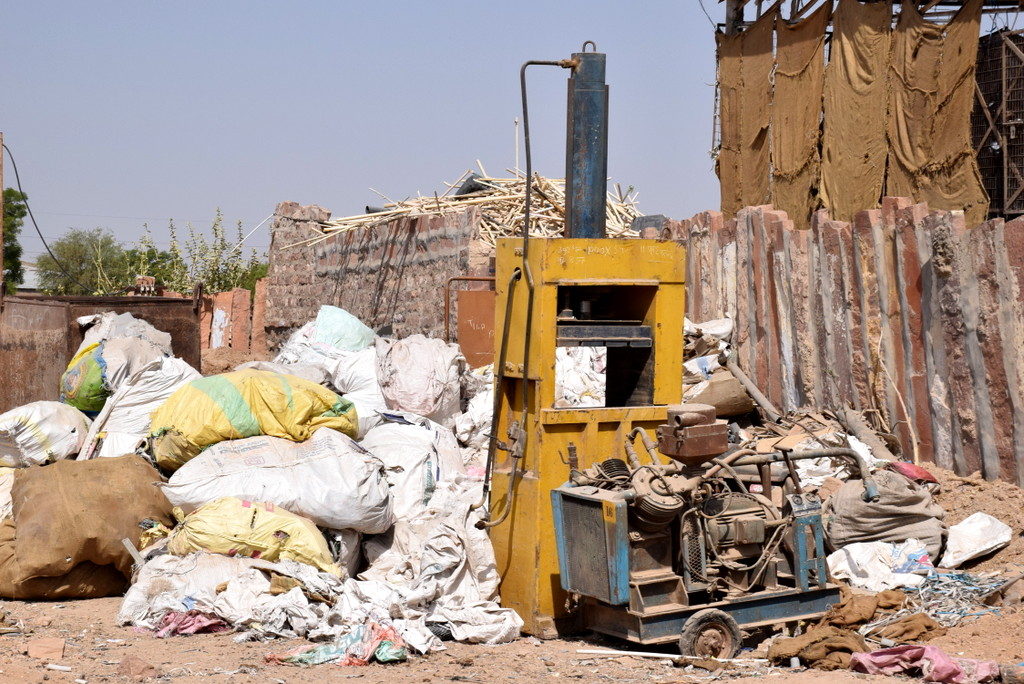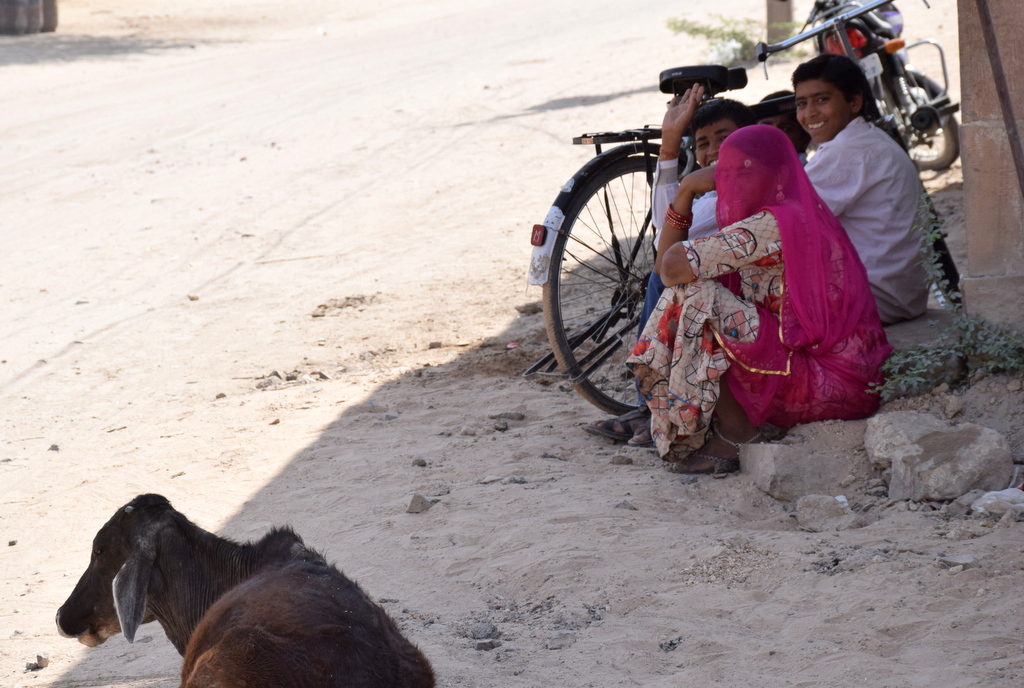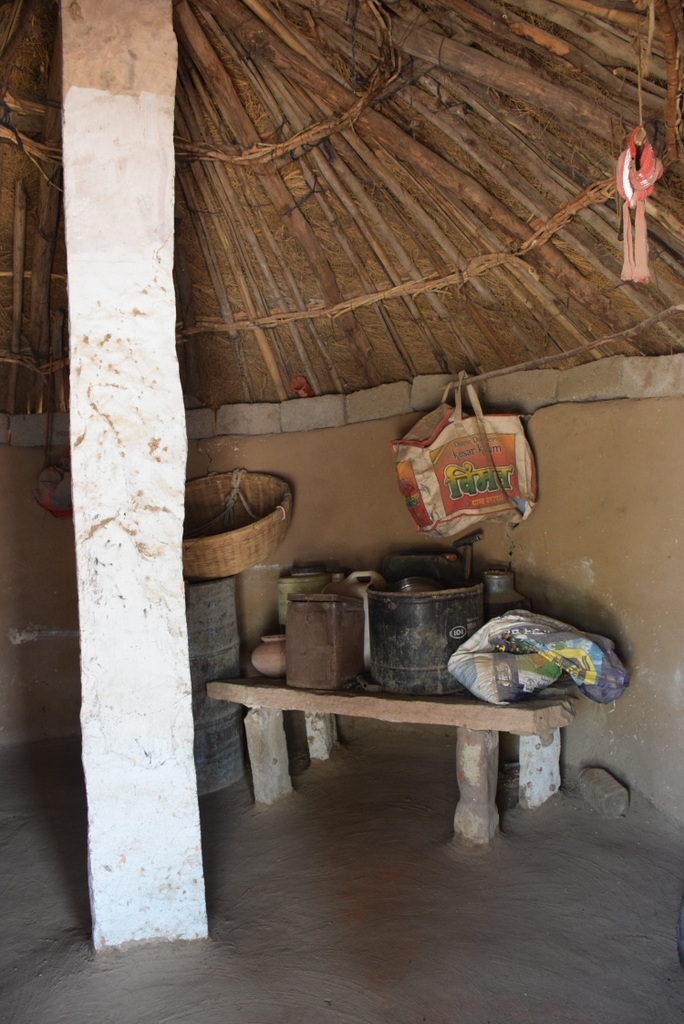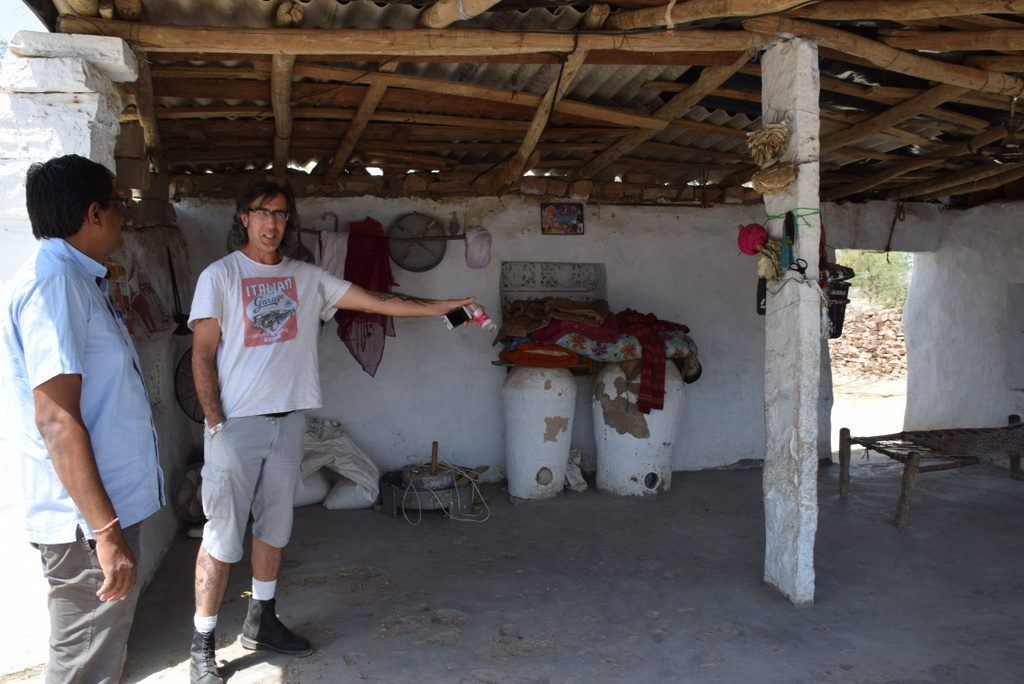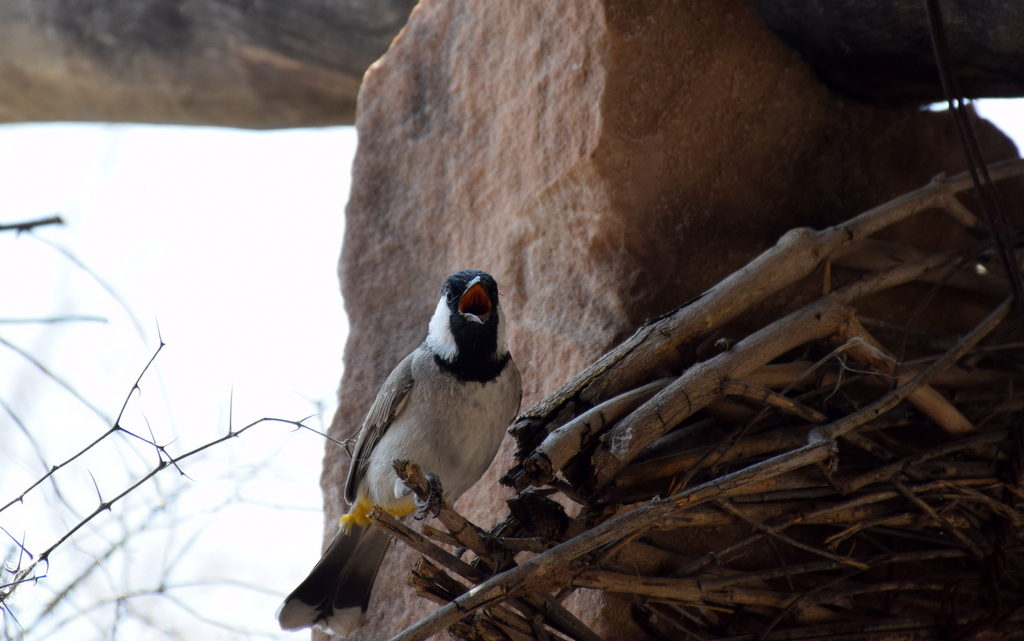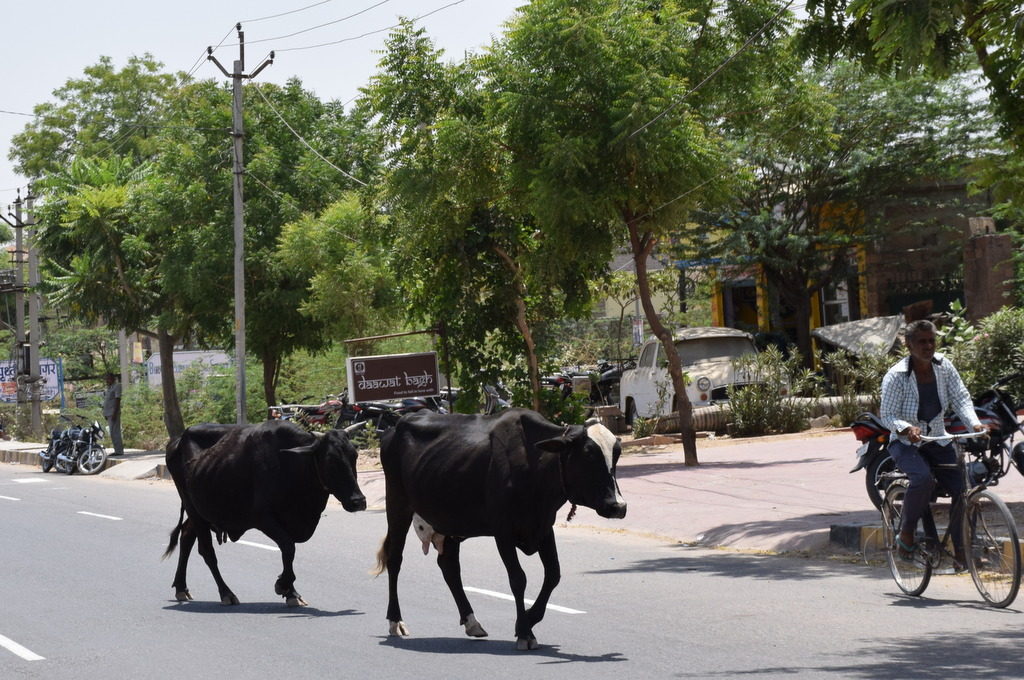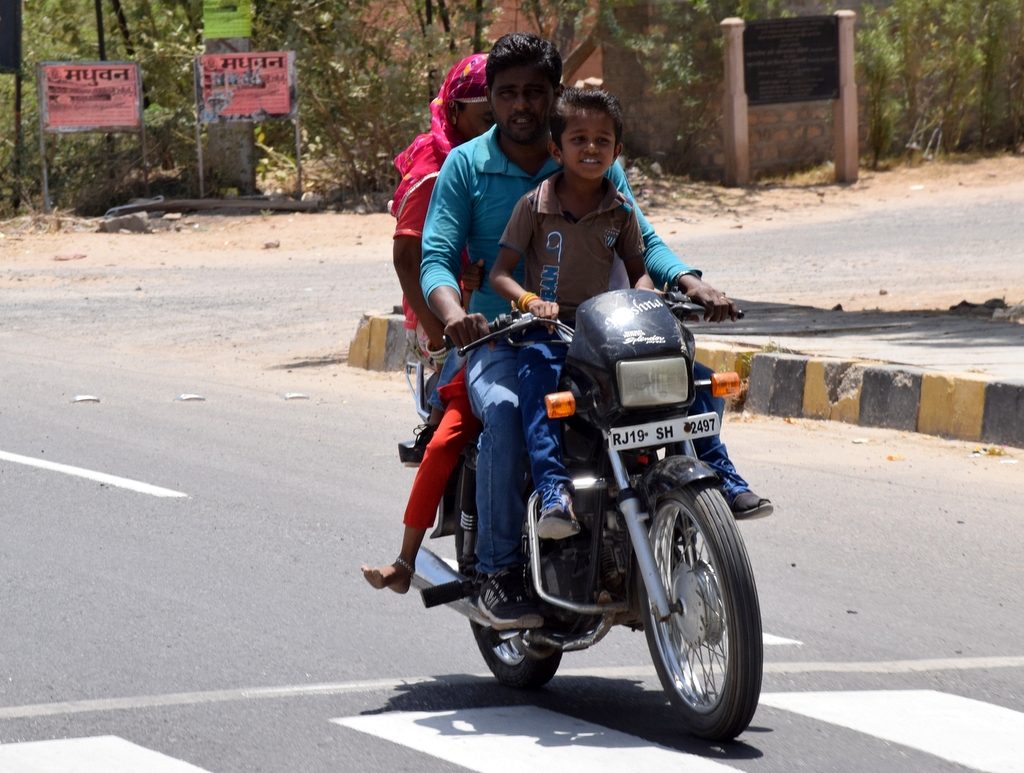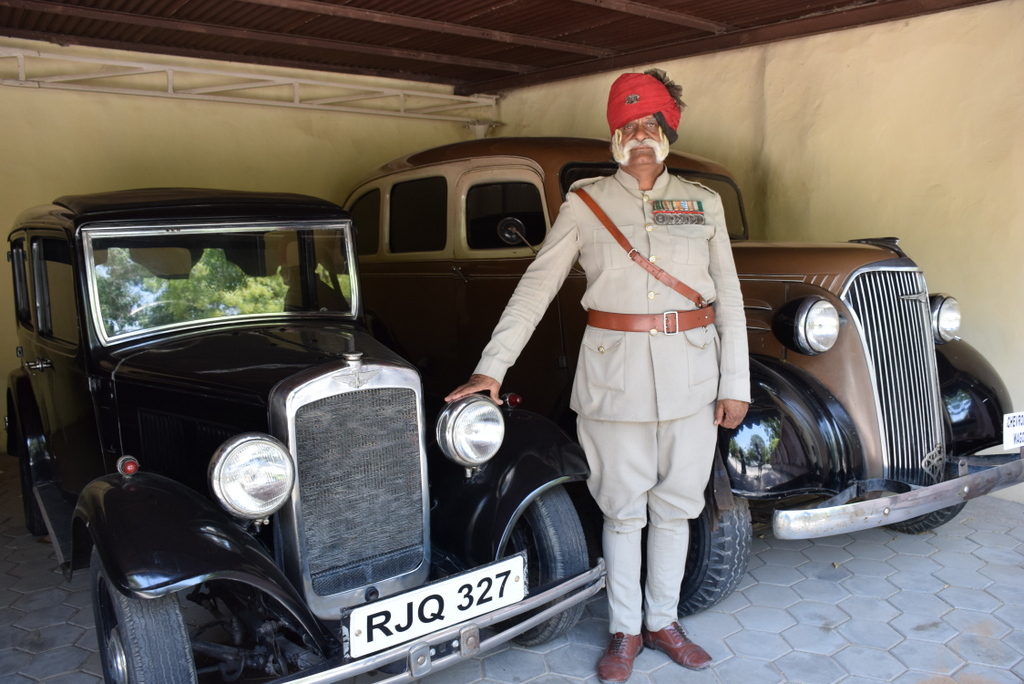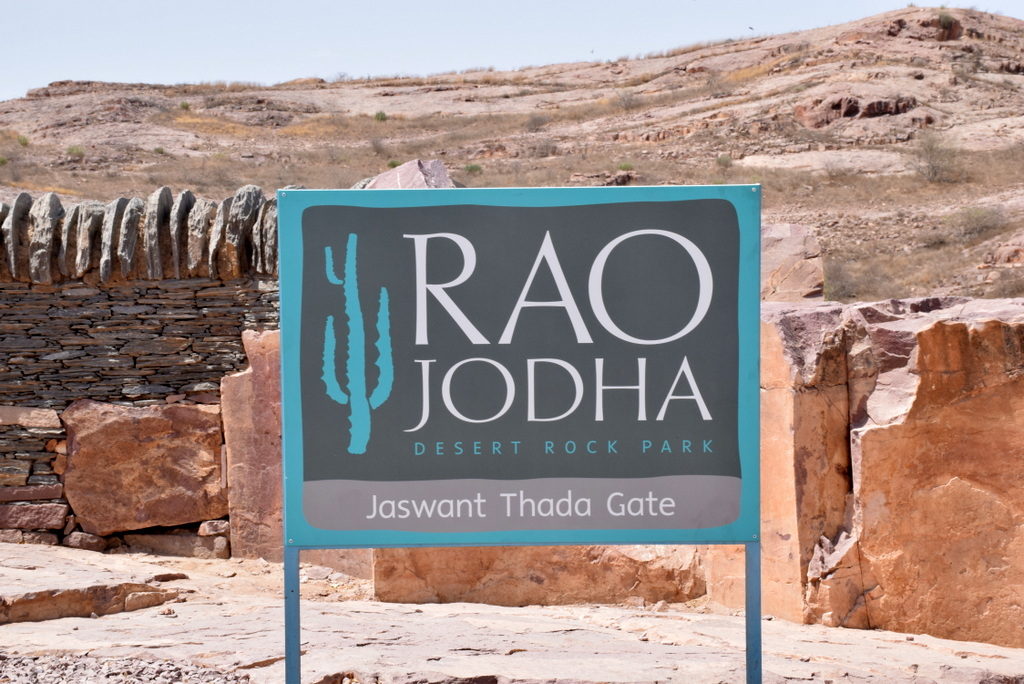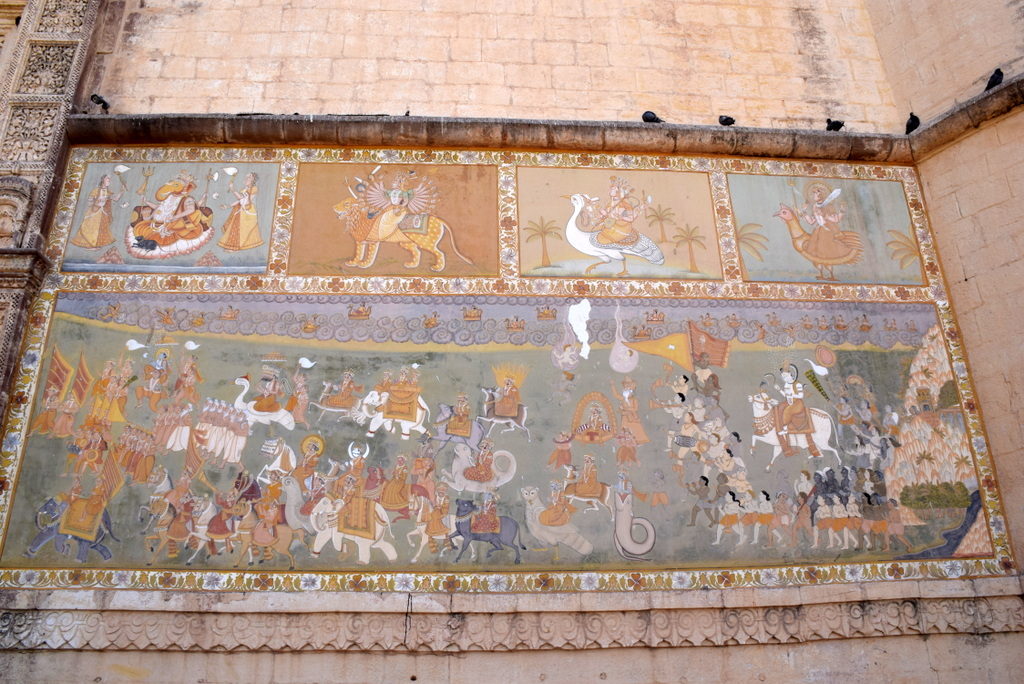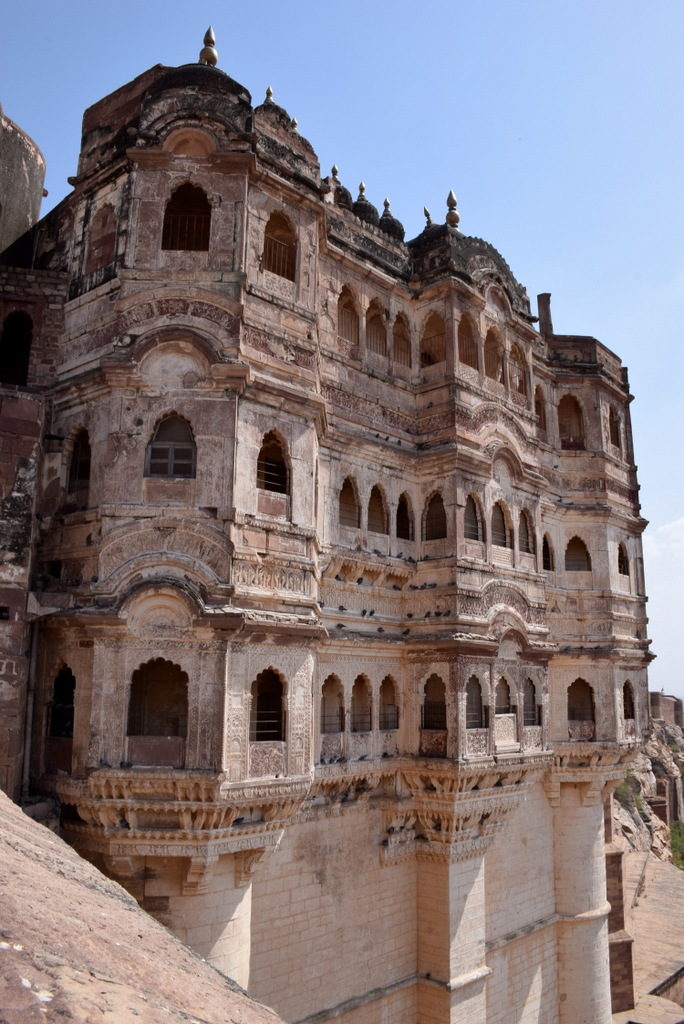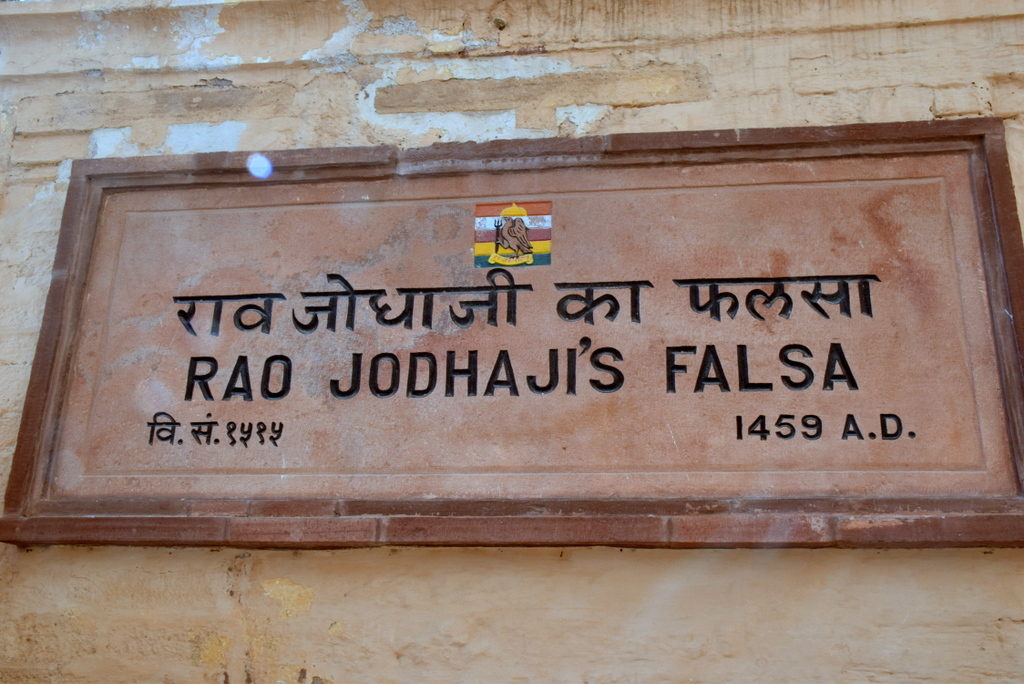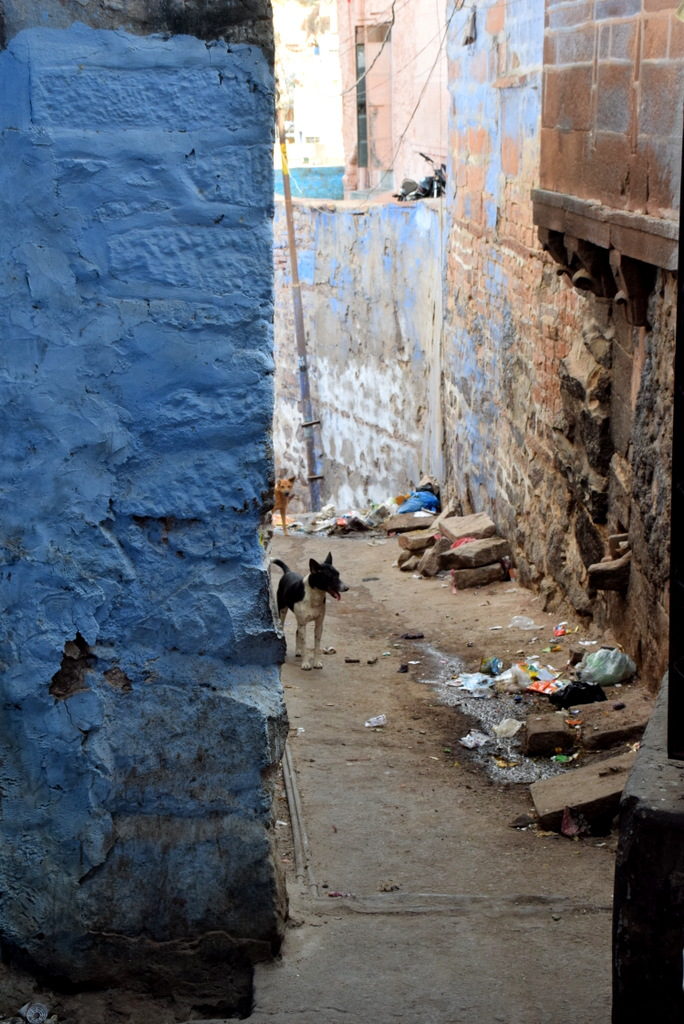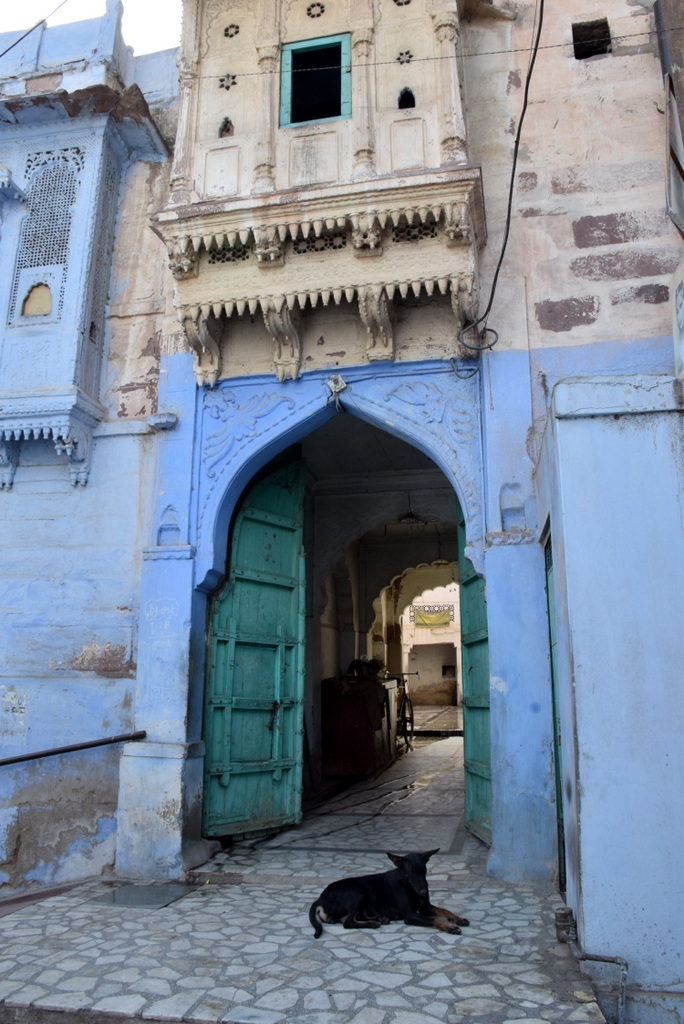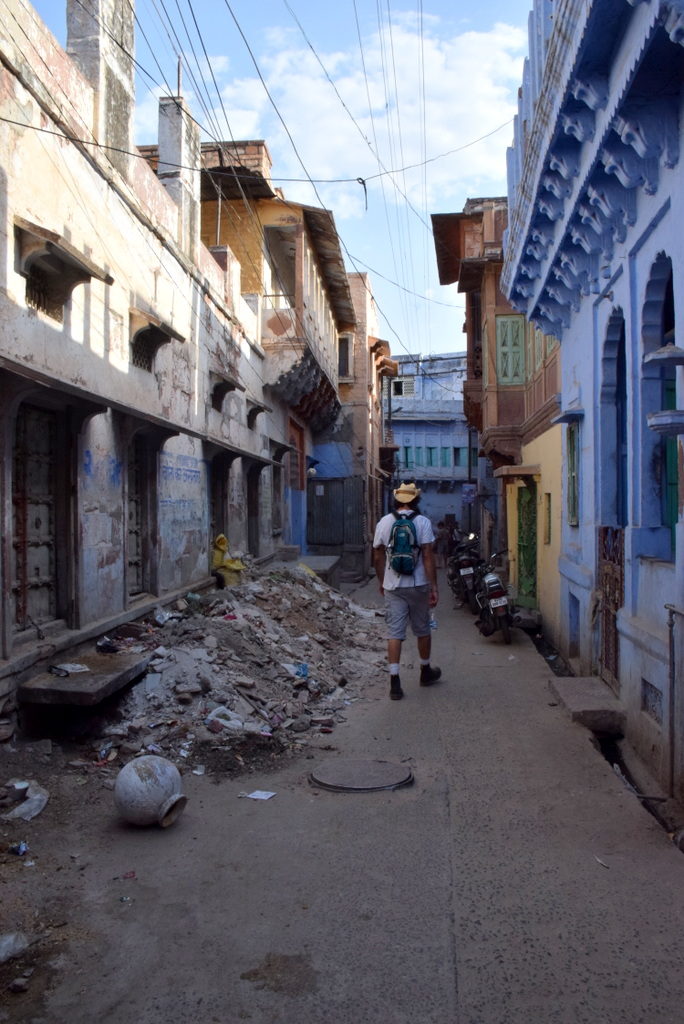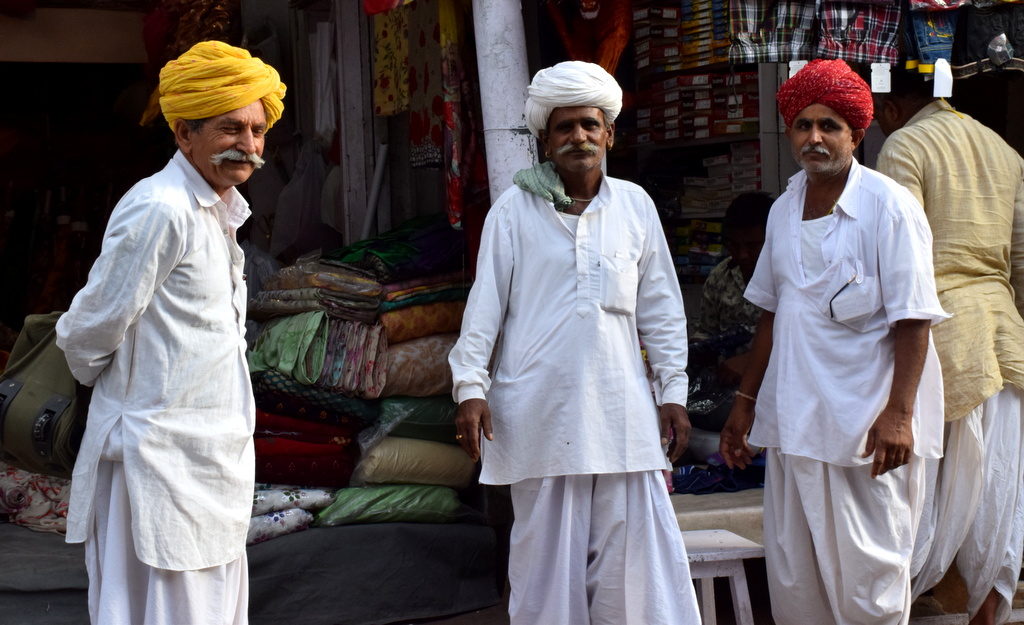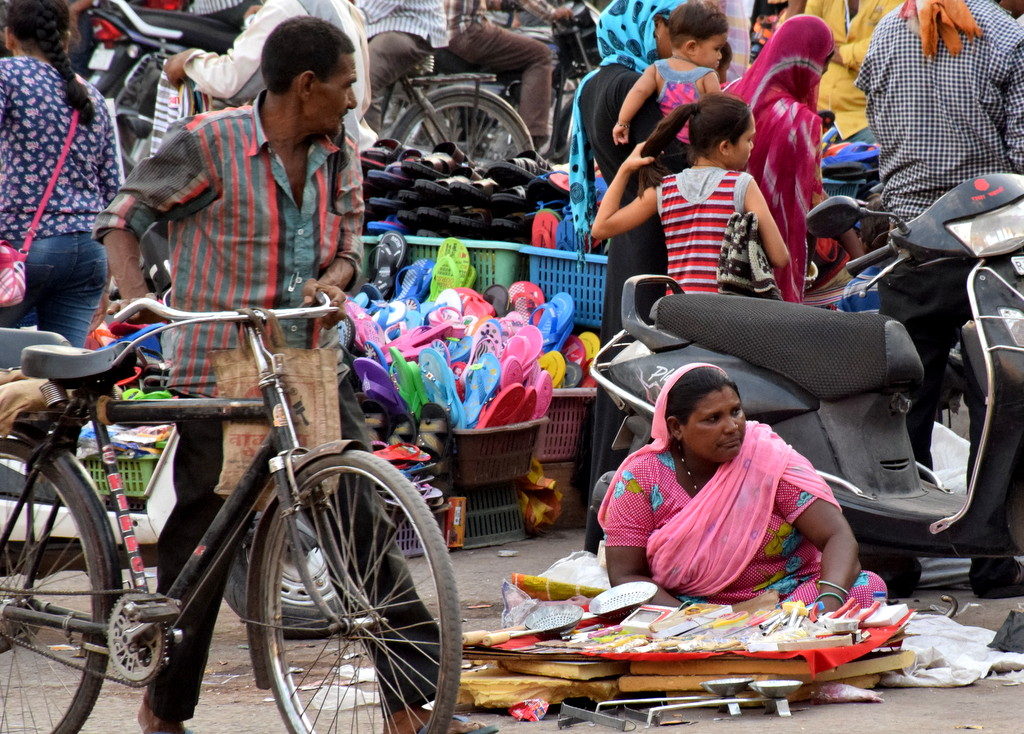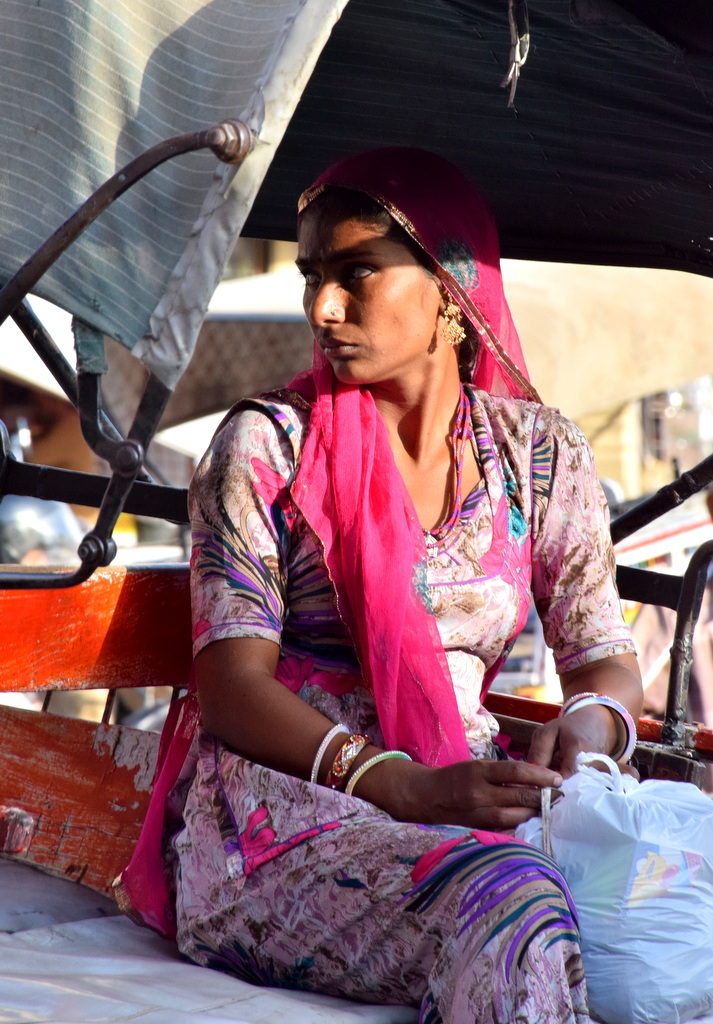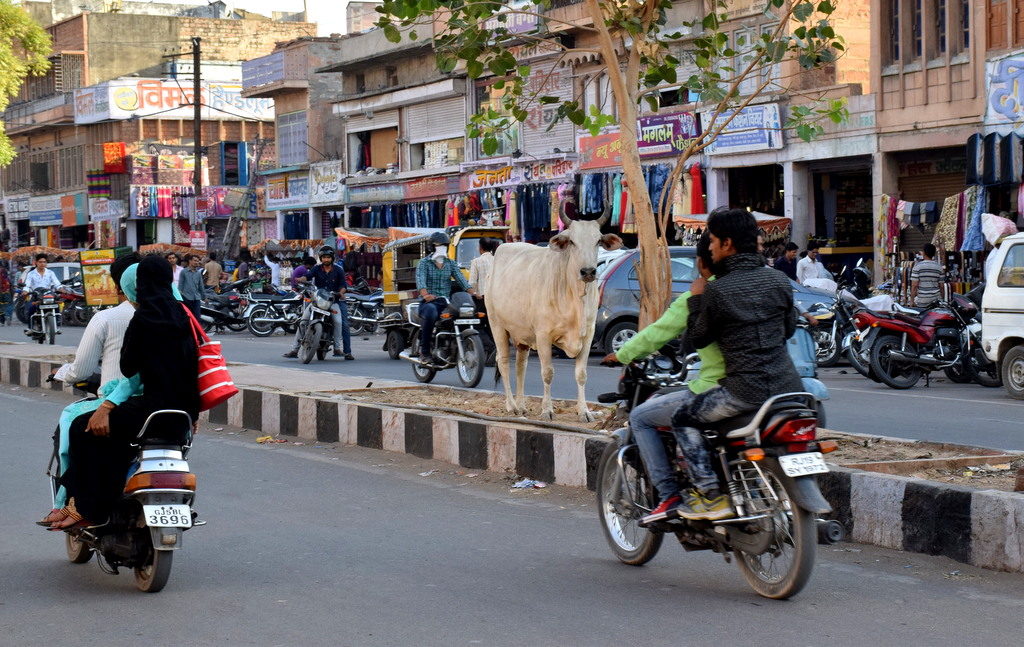We met our guide Mahavir and started the day with an open jeep ride through the countryside to the Bishnoi Villages, viewing some wildlife en route, antelope, cows of course, goats, sheep, etc. Then visited three different homesteads where the people were kind enough to let us in and show us their homes and businesses.
The first was a pottery business where everything is made from material found locally. The man showed us how he made the pots, he didn’t need any electricity and the tools he used were very simple, a concrete wheel rotating on a pivot, a piece of string a small stick. He made a water jug with a lid, a pot and a Indian style “piggy bank” in about 5 minutes. What unbelievable skill – they were perfect!
Next we visited a Hindu farm where they do not kill any animals nor do they cut down any trees. They have a totally self-sustaining farm where they recycle and only use renewable resources. They have been doing this for generations. They never have to go into town to buy anything. This is not really a conscious thought but a way of life based on Hindu teachings.
At the third house we visited the family weaves rugs by hand. They are part of a 50-person collective that makes them mostly for Indian companies to export. This family has been weaving rugs for at least 200 years. We watched the rug maker, who spoke excellent English, as he showed us the weaving process. No electric tools are used and all of the materials are all from local farms. The work is time consuming, it takes about 80 hours to produce a small 3X5 rug. Longer if the pattern is very detailed and intricate.
During the jeep ride Mahavir gave us lots of info about #Jodhpur, also known as ‘sun city’ (it has the most sunlight of all cities in India), and ‘blue city’ as in the old city the Brahmins (devotees of Shiva) paint their houses blue/indigo. Jodhpur, the second biggest city in Rhajastan, was founded in 1459 by Jodha and was the HQ of the Rathore Rajput’s celebrations, A six mile long wall surrounds the old city with eight gates.
After the jeep ride we had a bite of lunch after changing rooms at the hotel to one that was a little cooler, and ate at the next door restaurant ‘On The Rocks’ – owned by the same family as the hotel,
Then on to #Jaswant Thada a stunning white marble memorial built by Sardar Singh in 1899 in memory of her husband Maharaja Jaswant Singh II. This location was his favorite place to relax and meditate away from the city. This is the traditional cremation ground of Jodhpur rulers.
Next we went to the #Meherangarh Fort built in the mid 1400’s by Rao Jodha and took 300 years to complete. It was mind-blowingly huge with so much intricate carving in the sandstone one’s eye almost couldn’t cope with the magnitude of the structures. We had the added extra of seeing a ‘Bollywood’ movie being made as they were using the fort as a location for the shoot. Apparently there are many movies made in the palaces and forts all over this area.
We walked down from the top of the fort to the old city and meandered through its narrow winding streets, through residential areas built over 400 years ago, where many of the same families still live, generation after generation. Everyone know each other as the old city although sizable is still a village to them. Our guide stopped and talked with a few people and one guy said his family had lived there for over 500 years. His family has lived in the same house for over 300 years. Small three story apartments on narrow streets maybe five feet wide, home to dogs, cows, donkeys and littered with garbage, not to mention dog poop. Neighbors hanging out and gossiping not minding the smell or mess. We had to watch where we trod to avoid stepping in animal excrement or trash! We continued on to the neighborhood market where we were stared at by most of the locals, guess we were the odd ones out, but everyone was very nice and many people said hello or waved at us. It seemed very safe and there appeared to be little or no crime, we never feel uncomfortable or unsafe at all. There were a lot of villagers from the country side in the market buying goods to take home, apparently their style of dress differentiates them from the city locals. There is a government bus service that takes them into town. We were told that every couple of hundred kilometers you go, the dress style, language, customs and foods change! India has 122 major languages and 1599 other languages – or thereabouts! We finished our tour at the clock tower, the central square of the old city market.
What an incredible experience but trying to take it all in is exhausting, the feel and smell can only be experienced by walking the streets. Worth every second, an experience we will never forget.
- On the way to the Bishnoi Villages – Jeep Safari
- A Pheasant
- The pottery factory
- Cow dung patties used for cooking
- Complete self sufficient Hindu farm
- Equipment for opium ceremony
- Carpet Weaver
- Ajit Bhawan hotel
- Ajit Bhawan hotel
- Ajit Bhawan hotel
- Ajit Bhawan hotel
- Ajit Bhawan hotel
- Ajit Bhawan hotel
- Ajit Bhawan hotel
- Vintage cars at the Ajit Bhawan hotel
- Vintage cars at the Ajit Bhawan hotel
- Vintage cars at the Ajit Bhawan hotel
- Vintage cars at the Ajit Bhawan hotel
- Vintage cars at the Ajit Bhawan hotel
- Jaswant Thada
- Part of the city wall
- Meherangarh Fort being used for a Bollywood Movie set
- Meherangarh Fort being used for a Bollywood Movie set
- Swallow’s nest on the ceiling
- In the old ciy
- Bike or donkey
